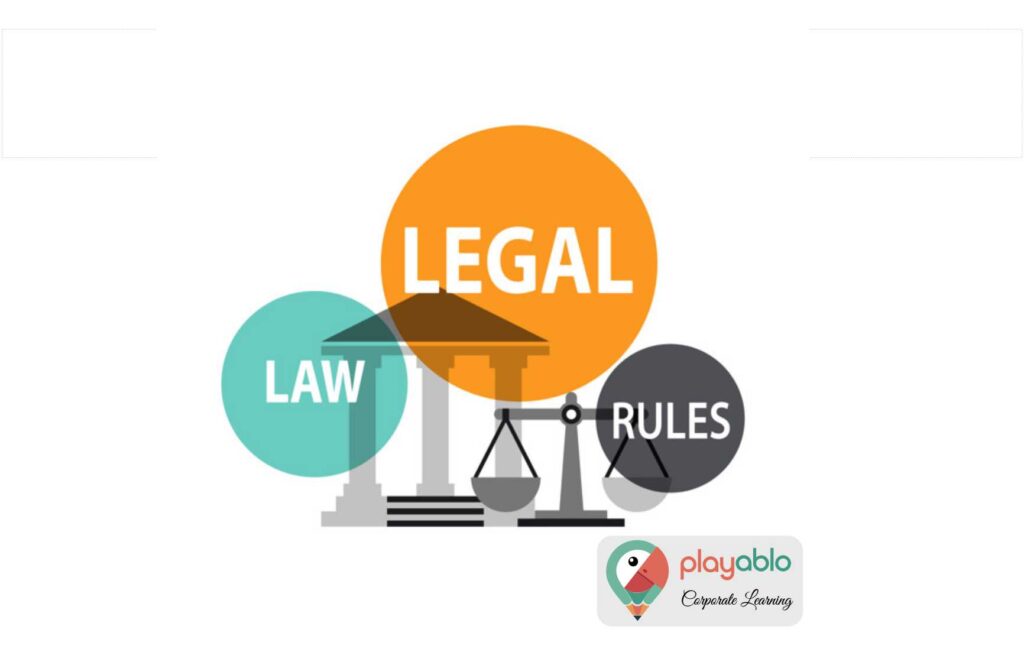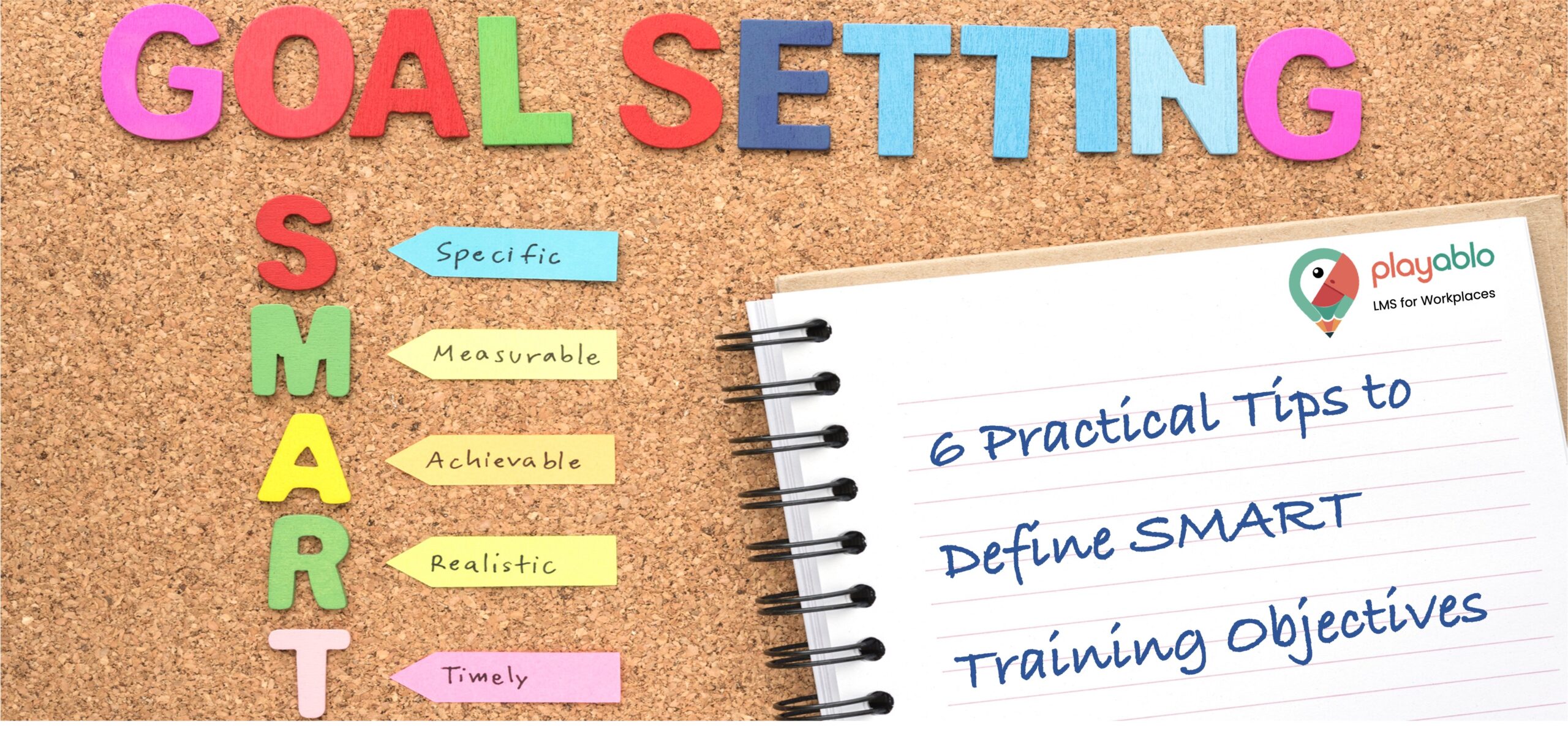The most important yet often disregarded element of the training and development cycle is setting and writing down training objectives. Because the L&D staff is eager to prepare presentations and schedule courses, creating a training objectives plan is frequently pushed to the bottom of the priority list and not given the attention it deserves.
SMART training objectives, on the other hand, ensure that your courses are a success. It would help if you aimed for Specific, Measurable, Attainable, Relevant, and Time-bound (S.M.A.R.T) objectives. You’ll be able to express these goals in a way that interests and resonates with employees if you use the SMART approach.
This article will show you how to create and write practical training objectives. First, let’s answer a fundamental question:
Table of Contents
What are your primary training objectives?

Figure out what you want to achieve through training before you start setting down your training objectives. Apart from company-specific goals, the majority of employee training benefits and objectives are universal. These are the following:
Increase Employee retention
Modern employees are infamous for their job-hopping habits, frequently due to a lack of career advancement. Employee development and progress are inextricably linked.
Future-readiness
Skilled workers are confident, upbeat, and prepared for the future workplace and its difficulties. Companies that wish to maintain their market position and incorporate the latest technologies and work trends prioritize employee reskilling and upskilling.
Improved Employee performance
This training goal is self-evident, but it is important enough to note. The fundamental purpose of training is to improve employee productivity by reinforcing existing skills and competencies. These skills include everything from using digital tools for day-to-day chores to mastering the most up-to-date sales strategies.
Better products and services
Employees make or break a corporation. Even the most brilliant ideas will fall flat if they are not skillfully executed. Your staff is the one who will, in one way or another, bring these concepts to life and ultimately define the quality of your goods.
How can you create the perfect organizational training objectives?

It’s time to write down your training goals now that you’ve defined them. These will be the foundation of your training course as well as your most persuasive marketing material.
Is it difficult for you to write training objectives? It’s not necessary. These 6 tips will assist you in creating compelling, practical, and quantifiable staff training objectives like a pro.
1. Make it clear what the training program’s goal is
What do you hope to get out of this training program? How can you boost staff productivity? How do you close a knowledge gap? Teach new employees skills that will help your business compete? Whatever the case may be, you must ensure that the training’s aim is apparent.
Keep in mind that training programs do not appear anywhere. There is always a cause for training to be conducted. A training needs analysis can identify skills and knowledge gaps among your staff and guide you in the appropriate direction for further training. You’ll find it easier to establish and outline training objectives once you’ve recognized your training needs and decided on the training’s aim.
2. Define the expected outcomes of the training
When describing the targeted training results, be as explicit as possible and allow no room for interpretation. One pro tip is to use vague terms like “understand,” “realize,” and “learn” sparingly. Instead, use verbs like “make,” “demonstrate,” and “compute” that show actual and observable action.
Ad: PlayAblo’s Enterprise-Grade Micro-Learning platform is built for the corporate learner. Micro-Learning, along with assessments and gamification features, ensures learning outcome measurement along with sustained engagement.
Find out more and request a custom demo!
3. Pay close attention to the circumstances

When creating training objectives, keep the following in mind. It would help if you examined several factors that will influence the design and delivery of your training program.
The availability of a trained instructor or a suitable facility, for example, can influence how you provide training. Your staff? Are they in-house or remote employees? What is your budget? It will play a role as well.
Consider the qualifications as well. Learners may be required to have a foundational understanding of a subject or some familiarity with the skill to enroll in a course. Please don’t assume they know what they’re doing and set unrealistic training targets.
When it comes to creating and conducting your training program, these variables can and will play a significant role. Find out where you stand, consider your conditions and restrictions, and tailor your training goals accordingly.
4. Align your training objectives with your company’s objectives
Base the training goals on observable and measurable outcomes. These results, in turn, must be based on a set of criteria, commonly known as key performance indicators or skill levels. Why? Because the primary purpose of training is to generate business outcomes.
Employee training will be a waste of time and resources unless you base the objectives on business indicators. A training program that links training goals with company goals is successful and relevant.
5. Use Bloom’s Taxonomy
Bloom’s Taxonomy was created by Benjamin Bloom, an American educational psychologist, in 1956. It’s a system for categorizing learning objectives based on the cognitive processes involved. Each learning objective corresponds to a different learning level. L&D professionals frequently use this taxonomy as a framework for defining learning objectives.
Let’s look at Bloom’s Taxonomy’s six learning goals:
Remember: Recognise, recall, retrieve, list, name, define, and match are all words that come to mind when remembering. Remembering necessitates the learner’s recall of previously acquired information. For instance: The staff will recall the five most common safety hazards in a warehouse at the end of safety training.

Understand: Understanding entails the ability to interpret, recognize, classify, explain, and outline. Now the student must have a good enough understanding of the material to describe it to others. Employees, for example, learn to identify prevalent cyber threats during IT security training.
APPLY: Organising, planning, implementing, executing, and solving Learners use the material to transition from theory to practice at this level. Example: Remote workers will plan their workload more efficiently by the end of this time management course.
ANALYZE: Analysing entails categorizing, classifying, simplifying, listing, distinguishing, and comparing. The learner can deconstruct information into its constituent parts and determine the relationships between them. For instance, following a practical software training session, a health information technician will categorize patient data.
Evaluate: Choose, compare, measure, determine, disprove, prioritize, and interpret when evaluating. Learners may make judgments and make decisions based on the information they have gathered at this level. Example: A QA tester can learn to identify a product’s quality after a training session accurately.
Create: Creating entails the following steps: develop, design, enhance, adapt, solve, alter, and perform. Learners can use their previously gained knowledge to create something new. An HR professional can learn to resolve workplace conflict, for instance.
6. Jot down your training objectives using the SMART format
When it comes to creating any type of goal – training or otherwise – the SMART approach has long been the gold standard. The process of developing SMART training objectives can be summed up in five letters:
S (Specific): Training objectives must be small and specific. What abilities will be gained by whom, and for what purpose? For each training aim, concentrate on one particular skill or knowledge.
M (Measurable): Learning outcomes must also be quantifiable. This implies that the organization or the department may quantify the acquired ability or knowledge in specific terms, such as a 10% jump in annual revenues.
A (Attainable): This term refers to training objectives that are realistic given the time and resources available. For example, you can’t expect trainees to grasp a complex skill in 20 minutes or even two hours of training.
R (Relevant): Being relevant means that your training objectives answer the question — “Why?” They should have an answer for: “What’s in it for me?” Learners must understand why they are undergoing training and what they may expect to gain from it. Will they be able to improve their work performance due to the skills or information they will gain? Will they be able to apply these skills in the workplace?
T – Time-bound: The time-bound element responds to the inquiry — “When?” A goal without a deadline is said to be nothing more than a fantasy. The same may be said for training objectives. Typically, the deadline is set after the training program. Of course, an additional practice may be required in some circumstances.
But how can you come up with reasonable learning goals? Here are some instances of SMART training objectives created from unclear learning goals:
Here is a nebulous statement: Learners will comprehend the SMART format.
Now, let us tweak it to make the statement smarter — Supervisors will develop quantifiable and retainable targets for their teams at the end of the session.
Again, participants will learn how to run the new system: says the nebulous statement.
SMART: After the session (Time-bound, Achievable), participants will be able to execute sales orders (Specific, Measurable) on the new CRM system (Relevant).
Conclusion
Training objectives connect a training program to real-world business outcomes. Setting clear, practical, and measurable training goals at the start of the training creation process will go a long way toward assuring your course’s success. The purpose of clear training is not only to answer the audience’s question: What’s in it for me? They also link training to organizational objectives and outcomes that can be measured. A lot is riding on these objectives, so do the wise thing and make them SMART.
Ad: PlayAblo’s Enterprise-Grade Micro-Learning platform is built for the corporate learner. Micro-Learning, along with assessments and gamification features, ensures learning outcome measurement along with sustained engagement.
Find out more and request a custom demo!







Comments are closed, but trackbacks and pingbacks are open.